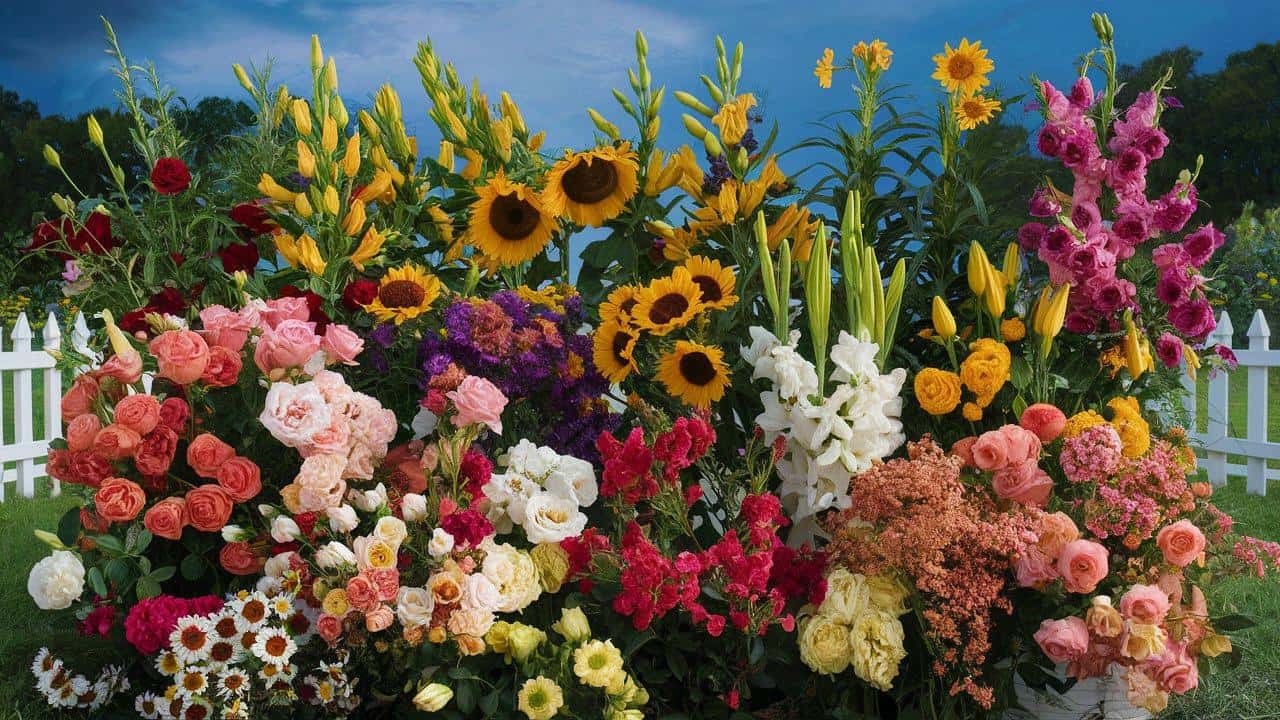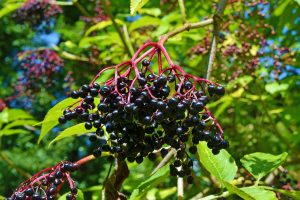Cultivating a cutting garden is a rewarding endeavor for both seasoned and novice gardeners. These dedicated spaces allow you to enjoy the beauty and fragrance of fresh-cut flowers throughout the seasons, while providing a renewable source for floral arrangements, bouquets, and personal enjoyment.
Lavender
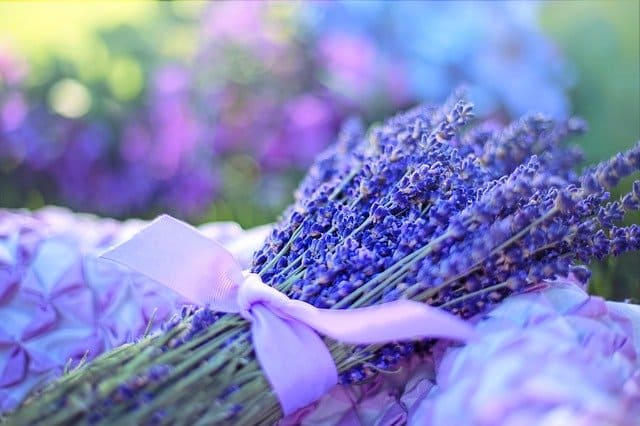
Lavender, with its distinctive purple hues and soothing aroma, is a quintessential cutting garden staple. This hardy, drought-tolerant perennial not only adds visual appeal to your garden but also offers a multitude of practical applications. The long, slender stems are perfect for cutting and arranging, while the fragrant foliage can be dried and used in sachets, potpourri, or as a natural air freshener. Lavender’s calming properties make it a favorite for both indoor and outdoor spaces, and its ability to attract pollinators such as bees and butterflies further enhances the garden’s ecosystem.
When incorporating lavender into your cutting garden, consider planting varieties like Hidcote, Munstead, or Phenomenal, which are known for their robust growth, abundant blooms, and extended flowering periods. Ensure well-draining soil and full sun exposure for optimal results, and be mindful of deadheading spent flowers to encourage continued blooming.
Zinnia

Zinnias are a vibrant and versatile addition to any cutting garden. These bold, cheerful flowers come in a wide range of colors, from classic reds and oranges to more unique shades of purple, pink, and yellow. Zinnias are renowned for their long-lasting blooms, making them an excellent choice for fresh-cut arrangements and bouquets.
One of the best features of zinnias is their easy-to-grow nature. They thrive in full sun and well-drained soil, and their prolific flowering habit ensures a steady supply of blooms throughout the growing season. To encourage continuous flowering, be sure to deadhead spent blossoms regularly. Popular cutting garden varieties include the Benary’s Giant, Dreamland, and Peppermint Stick series, each offering unique petal shapes and color combinations.
Snapdragons
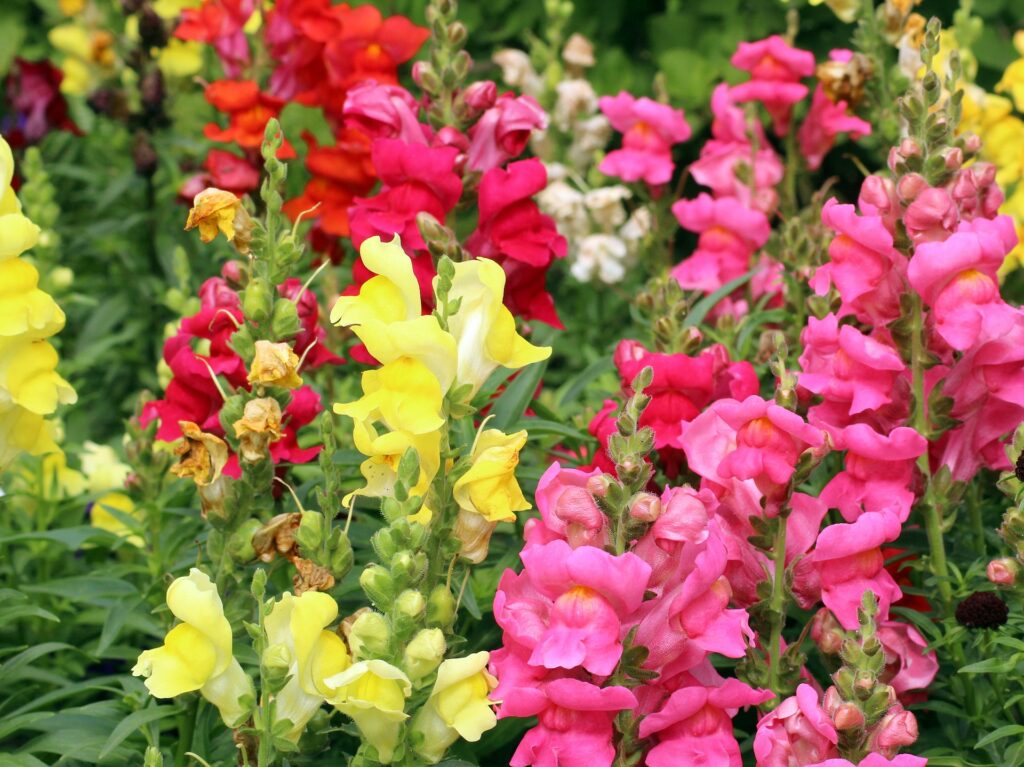
Snapdragons, with their whimsical, dragon-like flowers, add a touch of charm and elegance to cutting gardens. These tall, stately plants come in a vast array of colors, from classic reds and yellows to more unexpected shades like purple, white, and bicolor. Snapdragons are prized for their long, sturdy stems and their ability to last in cut-flower arrangements.
When growing snapdragons in your cutting garden, consider planting them in succession to extend the flowering season. Sow seeds indoors in early spring for an early-summer bloom, and then follow up with a second sowing for a late-summer to fall harvest. Provide well-drained soil and full sun exposure for the best results, and be mindful of deadheading spent flowers to encourage continued blooming.
Sunflowers

No cutting garden is complete without the vibrant, cheerful presence of sunflowers. These iconic blooms not only add a touch of sunshine to your garden but also offer a wealth of cutting opportunities. From the towering, majestic varieties to the more compact, branching types, sunflowers come in a diverse range of sizes, shapes, and colors, making them a versatile choice for fresh-cut arrangements.
When selecting sunflower varieties for your cutting garden, consider factors such as stem length, bloom size, and flowering time. Some popular cutting garden options include Sunbright, Sunspot, and Sunspot Patio, which offer long, sturdy stems and large, eye-catching flowers. Ensure that your sunflowers receive ample sunlight and well-drained soil, and be sure to harvest the blooms at the optimal stage of maturity for the longest vase life.
Black-eyed Susans
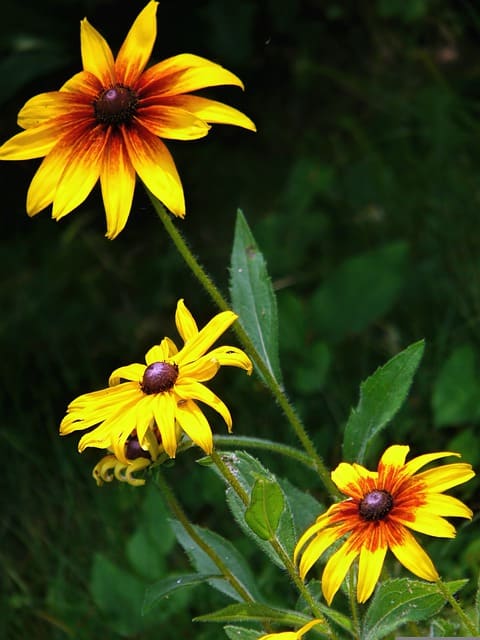
Bursting with cheerful, golden-yellow petals and a distinct black center, Black-eyed Susans are a beloved addition to any cutting garden. These hardy, drought-tolerant perennials are not only visually stunning but also incredibly versatile, making them a prime choice for fresh-cut arrangements.
Black-eyed Susans, also known as Rudbeckia, thrive in full sun and well-drained soil, and their long, sturdy stems are perfect for cutting and displaying in vases. Their vibrant blooms last for weeks, both in the garden and in cut-flower bouquets, adding a touch of warmth and rustic charm to any floral creation. Consider planting cultivars like ‘Goldstrum’ or ‘Becky’ for their reliable performance and abundant flowering.
Marigolds
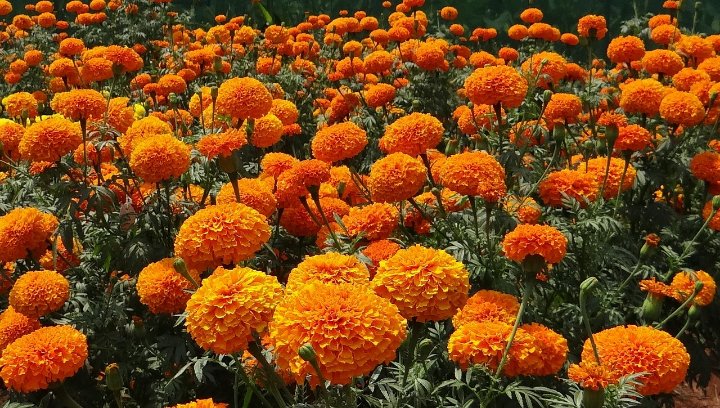
Marigolds are a vibrant and fragrant addition to the cutting garden, offering a wide range of colors and bloom forms to choose from. From the classic French marigolds with their delicate, ruffled petals to the bold, pom-pom-like African marigolds, these versatile flowers are sure to make a statement in your arrangements.
One of the best features of marigolds is their long-lasting nature, both in the garden and as cut flowers. Their strong, upright stems and sturdy blooms make them an excellent choice for bouquets and centerpieces, while their distinct, earthy aroma can also be used to deter pests in the garden. To ensure a continuous supply of marigolds for cutting, consider planting a variety of cultivars with different bloom times, such as ‘Alumia’ or ‘Durango.’
Hydrangea
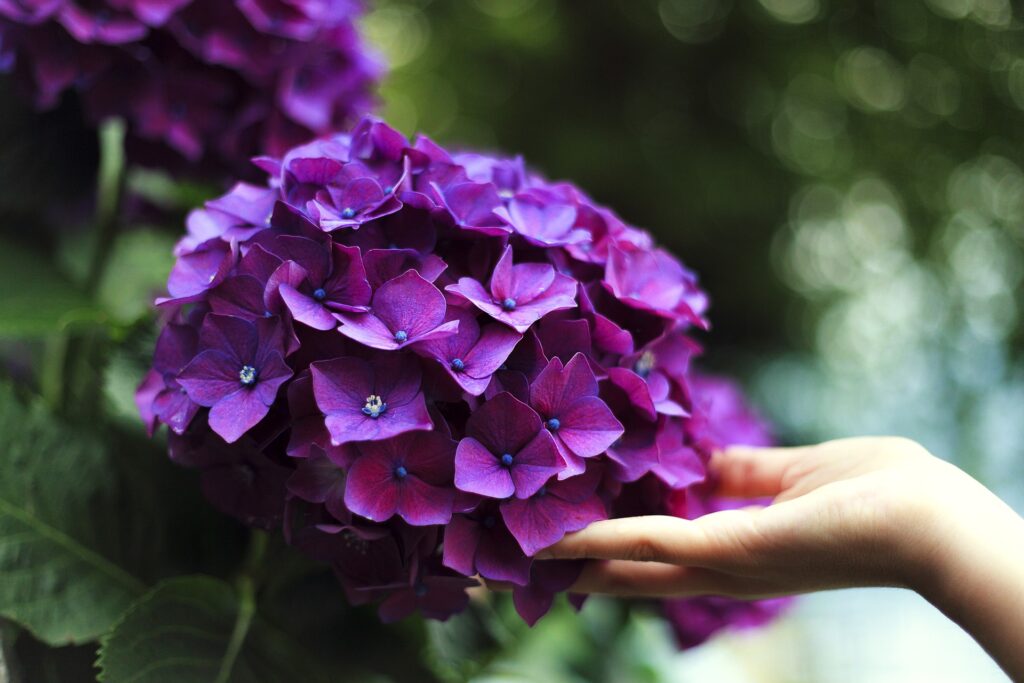
While hydrangeas may not be the first flower that comes to mind for a cutting garden, their impressive, statement-making blooms make them a worthy addition. These lush, showy flowers are perfect for creating elegant, romantic arrangements, and their long vase life ensures they’ll remain fresh and vibrant for days.
When incorporating hydrangeas into your cutting garden, focus on cultivars that are known for their prolific flowering and sturdy stems, such as ‘Endless Summer’ or ‘Incrediball.’ Be mindful of the soil pH, as hydrangeas thrive in slightly acidic conditions, and provide them with ample moisture and partial shade for optimal growth. With proper care and attention, your hydrangea blooms will be the centerpiece of your floral creations.
Aster
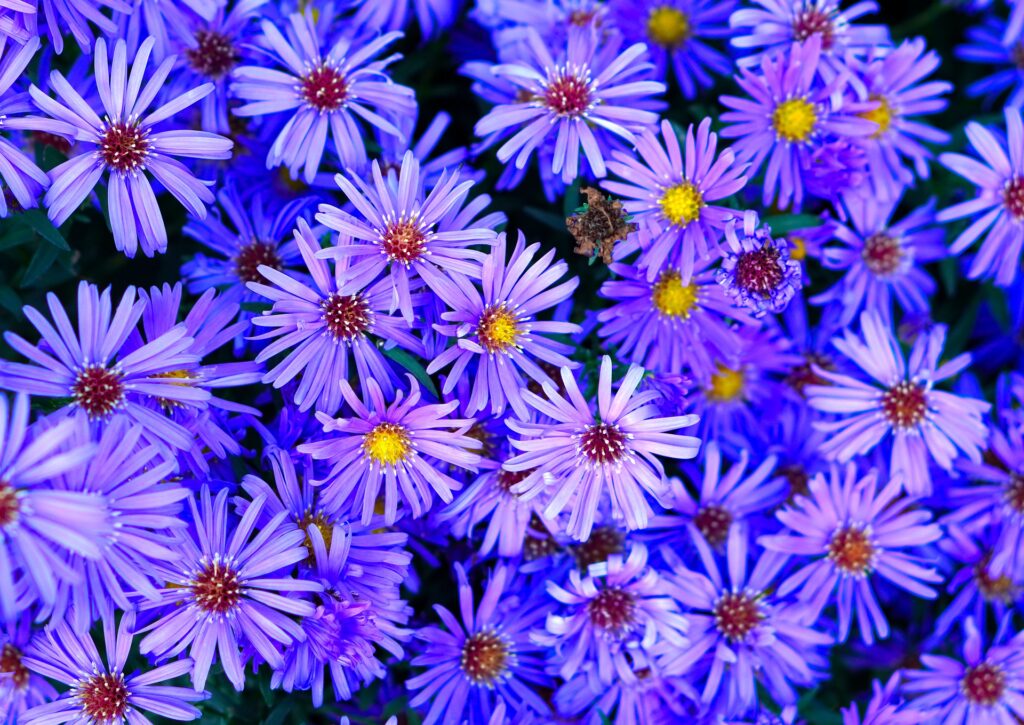
Asters, with their delicate, daisy-like flowers and vibrant color palette, are a must-have for the cutting garden. These versatile, long-blooming plants come in a wide range of hues, from classic purple and pink to more unexpected shades of white, red, and blue, making them a valuable asset for any floral arrangement.
One of the key advantages of asters is their extended flowering season, which can span from late summer through fall. This ensures a steady supply of blooms for cutting, allowing you to enjoy their beauty well into the cooler months. When selecting aster varieties for your cutting garden, consider factors like stem length, bloom size, and disease resistance, with cultivars like ‘Purple Dome’ and ‘Duchess’ being excellent choices.
Cosmos
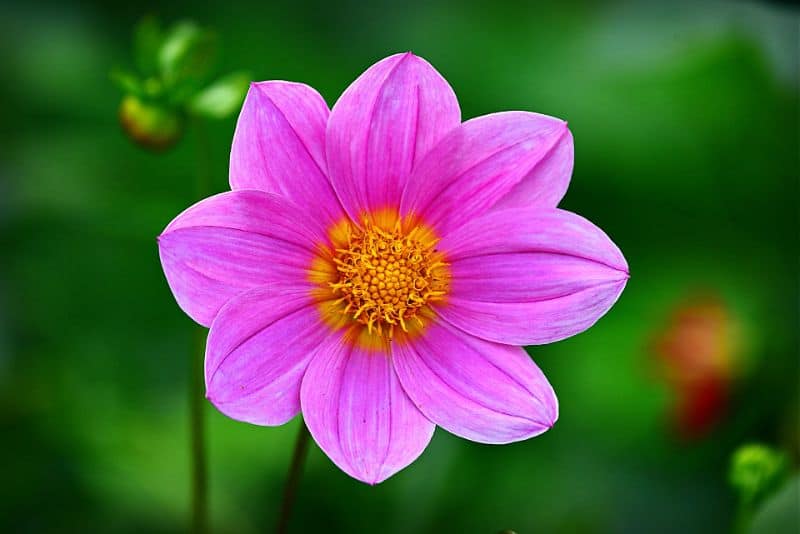
Cosmos, with their delicate, airy blooms and graceful, swaying stems, are a must-have for any cutting garden. These cheerful flowers come in a wide range of colors, from classic white and pink to vibrant shades of red, orange, and purple, making them a versatile addition to any floral arrangement.
One of the standout features of cosmos is their long flowering season, which can span from midsummer to the first frost. This ensures a steady supply of blooms for cutting, allowing you to enjoy their beauty throughout the growing season. When selecting cosmos varieties for your cutting garden, consider cultivars like ‘Sensation,’ ‘Bright Lights,’ or ‘Cosmic Orange,’ which offer large, long-lasting flowers and sturdy stems.
Roses
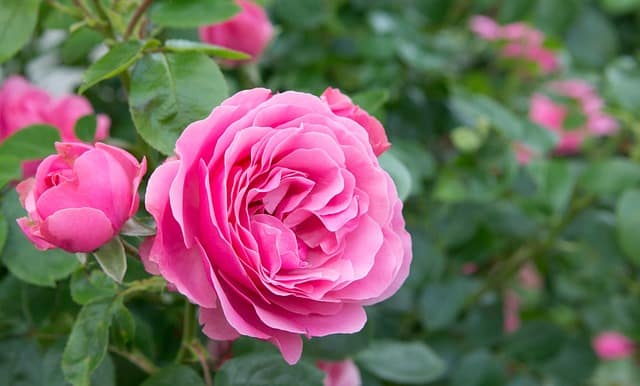
While roses may not be the first flower that comes to mind for a cutting garden, these timeless beauties can be a valuable addition to your horticultural haven. With their elegant, fragrant blooms and wide range of colors, roses can elevate any floral arrangement, adding a touch of sophistication and romance.
When incorporating roses into your cutting garden, focus on varieties that are known for their strong, upright stems and reliable flowering, such as ‘Iceberg,’ ‘Double Delight,’ or ‘Drift.’ Be mindful of the rose’s care requirements, including providing well-drained soil, ample sunlight, and regular pruning to maintain their health and productivity. With the right care and attention, your rose blooms will be a stunning centerpiece in your cutting garden arrangements.
Yarrow
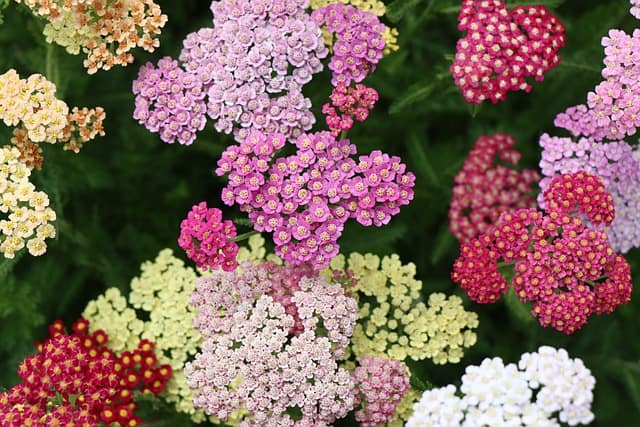
Yarrow, with its distinctive, flat-topped flower clusters and fern-like foliage, is a versatile and long-lasting addition to any cutting garden. This hardy perennial comes in a variety of colors, including white, yellow, pink, and red, making it a valuable asset for creating visually striking bouquets and arrangements.
One of the key advantages of yarrow is its ability to thrive in a wide range of soil and light conditions, making it an easy-to-grow choice for both novice and experienced gardeners. To ensure a steady supply of yarrow blooms for cutting, consider planting a mix of cultivars with different flowering times, such as ‘Moonshine’ and ‘Paprika.’ With their strong, sturdy stems and long vase life, yarrow flowers will add texture, color, and longevity to your floral creations.
Celosia

Celosia, with its vibrant, flame-like blooms, is a bold and eye-catching addition to any cutting garden. These unique flowers come in a range of colors, from the classic crimson and gold to more unexpected shades of pink, purple, and orange, making them a versatile choice for floral arrangements.
One of the standout features of celosia is its long flowering season, which can last from midsummer through the first frost. This ensures a steady supply of blooms for cutting, allowing you to enjoy their striking visual impact throughout the growing season. When selecting celosia varieties for your cutting garden, consider cultivars like ‘Cockscomb,’ ‘Flamingo Feather,’ or ‘Intenz,’ which offer large, impressive blooms and sturdy, upright stems.
Amaranth
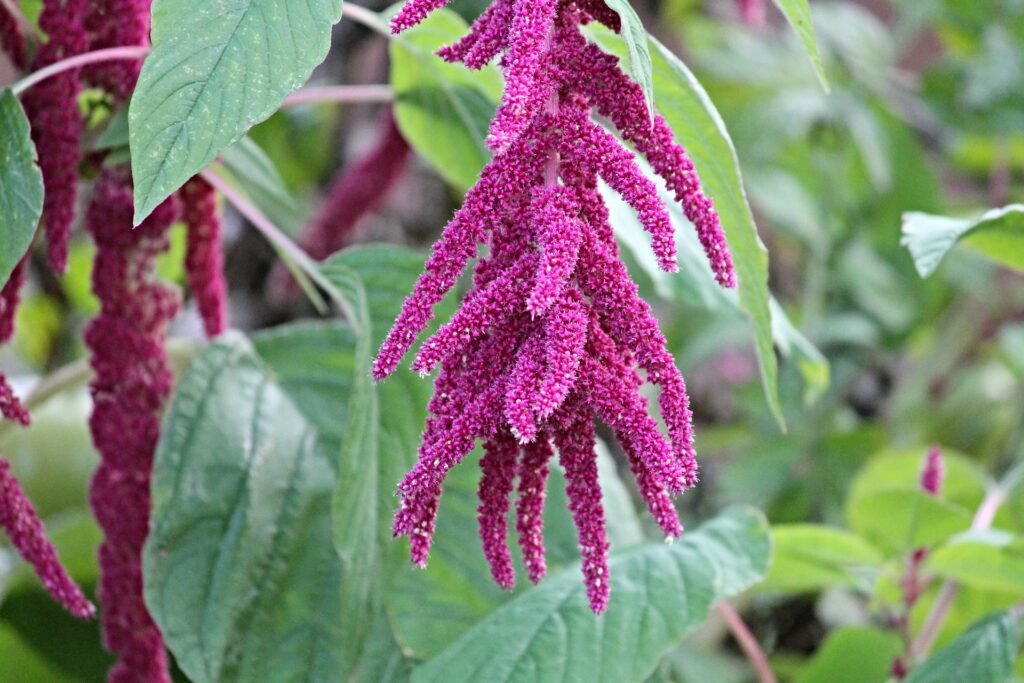
Amaranth, with its stunning, cascading flower plumes, is a bold and captivating addition to any cutting garden. These striking plants come in a range of colors, from the deep, rich burgundy of ‘Hopi Red Dye’ to the vibrant, fluorescent fuchsia of ‘Carnival.’ Amaranth’s unique, textural blooms make it a standout choice for adding visual interest and drama to floral arrangements.
Beyond their aesthetic appeal, amaranth flowers are also highly versatile, with long, sturdy stems that hold up well in cut-flower bouquets. They have a relatively long vase life, often lasting for over a week, making them an excellent choice for both indoor and outdoor displays. To ensure a continuous supply of amaranth blooms, consider planting a variety of cultivars with different maturity times, such as ‘Dreadlocks’ and ‘Oeschberg.’
Anemone
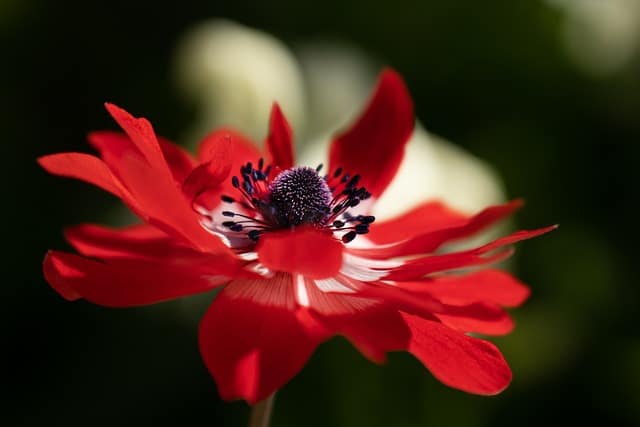
Anemones, with their delicate, cup-shaped blooms and vibrant color palette, are a stunning addition to any cutting garden. These versatile flowers come in a range of hues, from the classic white and pink to more unexpected shades of purple, blue, and red, making them a valuable asset for creating visually striking floral arrangements.
One of the key advantages of anemones is their long flowering season, which can span from early spring through late fall, depending on the cultivar. This ensures a steady supply of blooms for cutting, allowing you to enjoy their beauty throughout the growing season. When selecting anemone varieties for your cutting garden, consider cultivars like ‘De Caen,’ ‘St. Brigid,’ or ‘Mistral,’ which offer large, long-lasting flowers and sturdy stems.
Dahlia
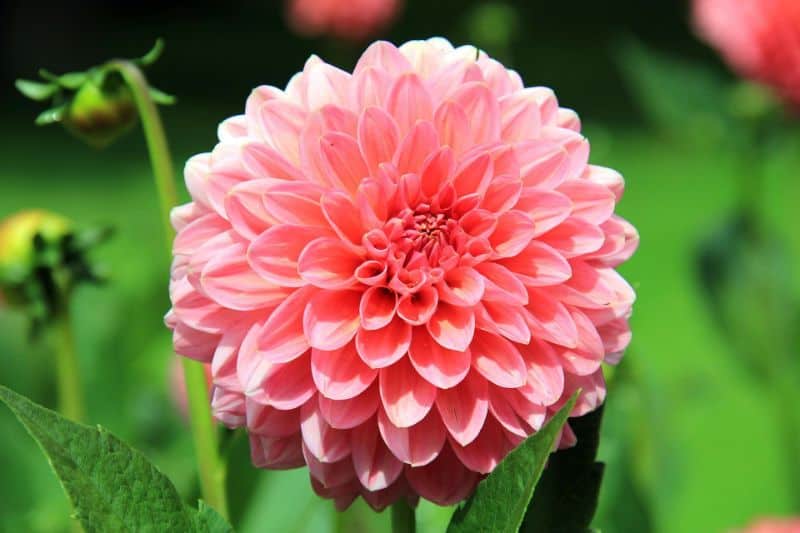
Dahlias, with their bold, eye-catching blooms and wide range of shapes and sizes, are a must-have for the cutting garden. These vibrant flowers come in a dazzling array of colors, from the classic reds and oranges to more unique shades of purple, pink, and yellow, making them a valuable asset for creating stunning floral arrangements.
One of the standout features of dahlias is their prolific flowering habit, which can provide a steady supply of blooms from midsummer through the first frost. To ensure a continuous harvest, consider planting a variety of dahlia cultivars with different bloom times, such as ‘Café au Lait,’ ‘Karma Choc,’ and ‘Labyrinth.’ Be mindful of the dahlia’s care requirements, including providing well-drained soil, ample sunlight, and proper staking or support, to ensure the best possible results in your cutting garden.
Strawflowers
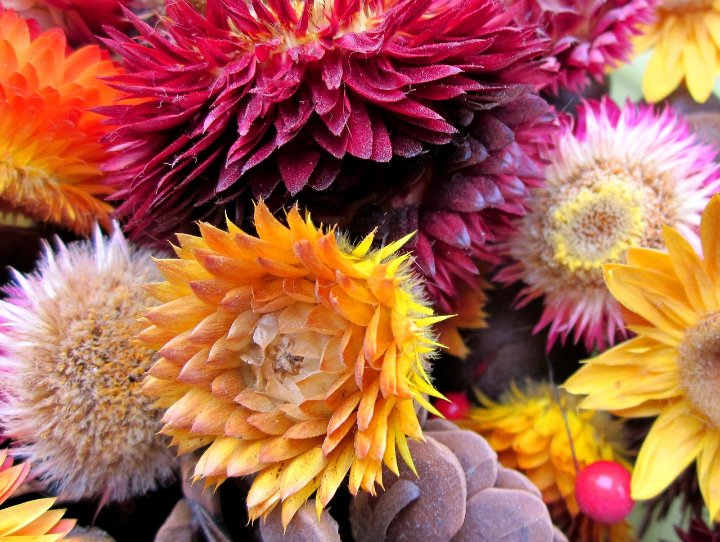
Strawflowers, with their distinctive, papery petals and vibrant color palette, are a unique and long-lasting addition to any cutting garden. These resilient flowers come in a range of hues, from the classic yellow and orange to more unusual shades of pink, purple, and white, making them a versatile choice for floral arrangements.
One of the key advantages of strawflowers is their exceptional vase life, often lasting for several weeks after being cut. This makes them an excellent choice for bouquets, dried arrangements, and other long-lasting floral displays. When incorporating strawflowers into your cutting garden, consider cultivars like ‘Sunbright,’ ‘Silvery Rose,’ or ‘Flamingo,’ which offer large, impressive blooms and sturdy, upright stems.
Sweet Pea
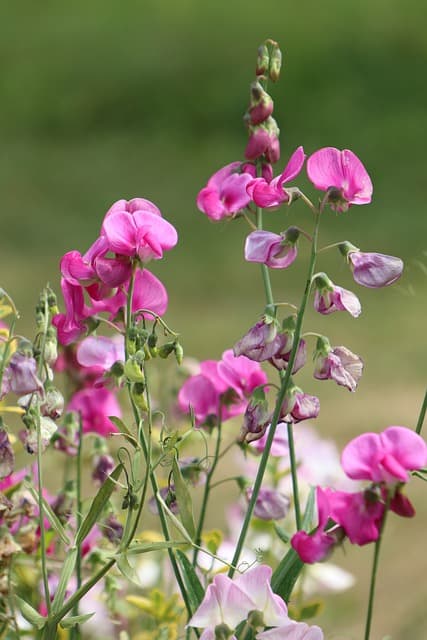
Sweet peas, with their delicate, fragrant blooms and whimsical, climbing vines, are a beloved addition to any cutting garden. These enchanting flowers come in a wide range of colors, from the classic pastel shades of pink and lavender to the bold, vibrant hues of red and blue, making them a versatile choice for floral arrangements.
One of the standout features of sweet peas is their intoxicating scent, which can fill the air with a sweet, honey-like aroma. This makes them a popular choice for bouquets and centerpieces, where their fragrance can be fully appreciated. To ensure a continuous supply of sweet pea blooms for cutting, consider planting a variety of cultivars with different maturity dates, such as ‘Mammoth,’ ‘Royal Family,’ or ‘Bijou.’
Poppy
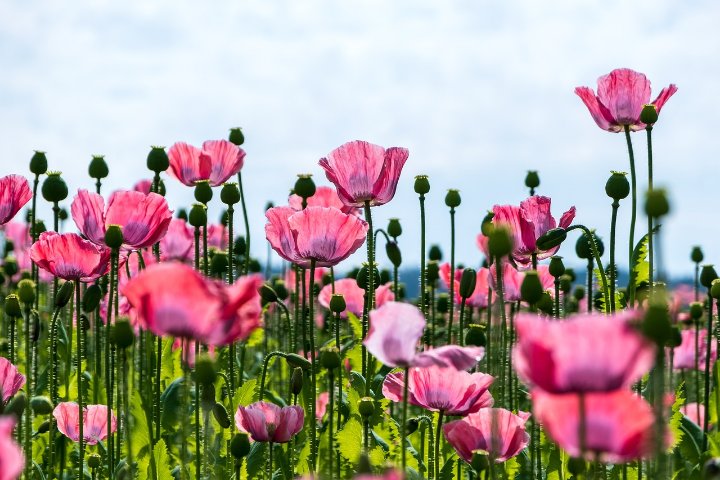
Poppies, with their delicate, paper-like petals and vibrant, almost luminescent hues, are a striking and unique addition to the cutting garden. These captivating flowers come in a range of colors, from the classic red and orange to more unexpected shades of pink, purple, and white, making them a valuable asset for creating eye-catching floral arrangements.
One of the key advantages of poppies is their relatively short bloom time, which adds a sense of fleeting beauty and excitement to the cutting garden. To ensure a steady supply of poppy flowers for cutting, consider planting a variety of cultivars with different maturity times, such as ‘Champagne Bubbles,’ ‘Shirley,’ or ‘Lauren’s Grape.’ Be mindful of the poppy’s care requirements, including providing well-drained soil and ample sunlight, to ensure the best possible results.
Beardtongue
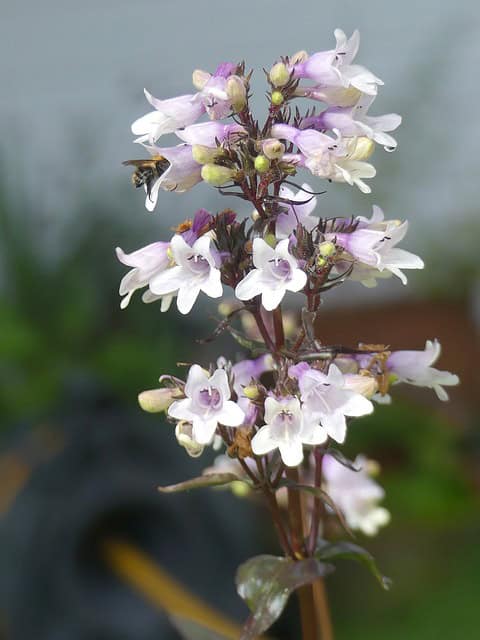
Beardtongue, also known as Penstemon, is a versatile and long-blooming perennial that makes an excellent addition to the cutting garden. These charming flowers feature spikes of tubular blooms in a range of colors, from the classic lavender and pink to more unusual shades of red, purple, and white, adding a touch of whimsy and elegance to floral arrangements.
One of the standout features of beardtongue is its extended flowering season, which can last from late spring through midsummer. This ensures a steady supply of blooms for cutting, allowing you to enjoy their beauty throughout the growing season. When selecting beardtongue varieties for your cutting garden, consider cultivars like ‘Husker Red,’ ‘Firebird,’ or ‘Pinacolada,’ which offer large, long-lasting flowers and sturdy stems.
Bachelor’s Button
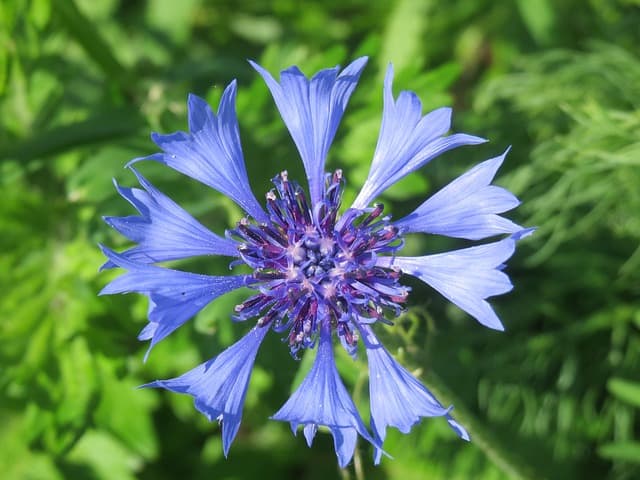
Bachelor’s buttons, with their vibrant, globe-shaped blooms and slender, upright stems, are a charming and long-lasting addition to the cutting garden. These cheerful flowers come in a range of colors, including classic blue, pink, and white, making them a versatile choice for creating beautiful floral arrangements.
One of the key advantages of bachelor’s buttons is their exceptional vase life, with the blooms often lasting for over a week after being cut. This makes them an excellent choice for bouquets, centerpieces, and other long-lasting floral displays. To ensure a continuous supply of bachelor’s button blooms, consider planting a variety of cultivars with different maturity times, such as ‘Blue Boy,’ ‘Red Boy,’ or ‘Polka Dot.’
Starflower
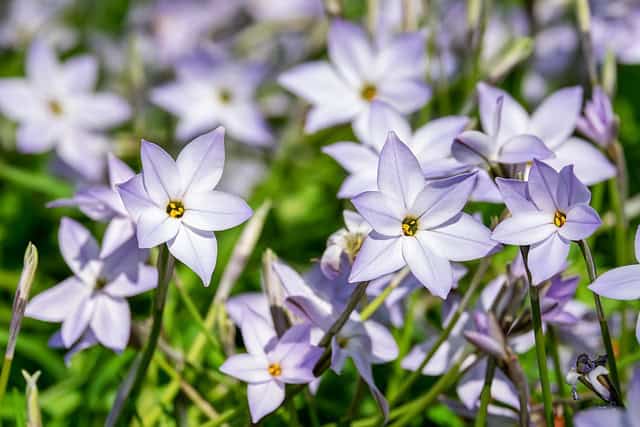
Starflowers, with their delicate, star-shaped blooms and lush, verdant foliage, are a charming and long-lasting addition to any cutting garden. These enchanting flowers come in a range of colors, from the classic white and pink to more unusual shades of blue and purple, making them a versatile choice for floral arrangements.
One of the standout features of starflowers is their exceptional vase life, with the blooms often lasting for over two weeks after being cut. This makes them an excellent choice for bouquets, centerpieces, and other long-lasting floral displays. To ensure a continuous supply of starflower blooms, consider planting a variety of cultivars with different maturity times, such as ‘Starlight’ and ‘Starbright.’
Statice
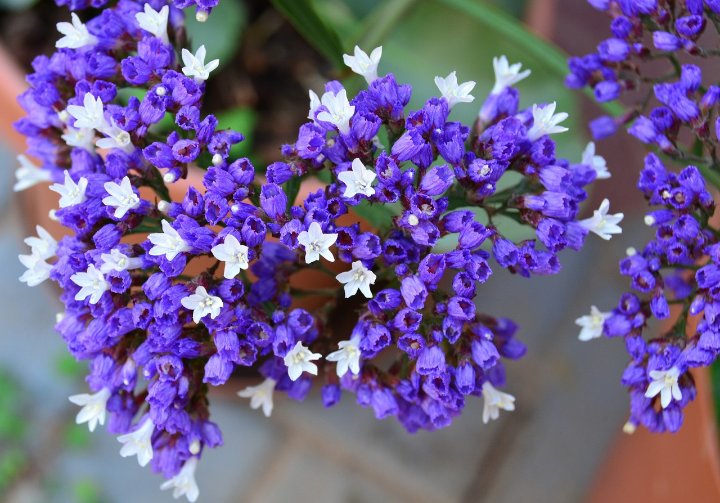
Statice, with its delicate, papery blooms and long, sturdy stems, is a valuable addition to any cutting garden. These unique flowers come in a range of colors, from the classic lavender and white to more vibrant shades of yellow, pink, and purple, adding depth and texture to floral arrangements.
One of the key advantages of statice is its exceptional drying properties, which make it a popular choice for both fresh and dried arrangements. The blooms retain their shape and color even after being dried, allowing you to enjoy their beauty long after the growing season has ended. When incorporating statice into your cutting garden, consider cultivars which offer large, long-lasting flowers and sturdy stems.
Lupine
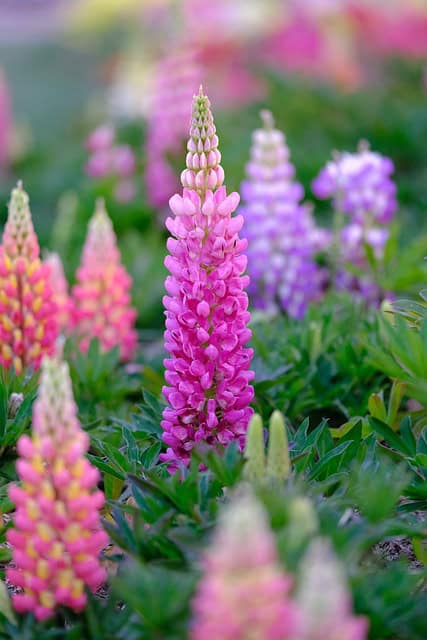
Lupine, with its striking, spike-like blooms and lush, palmate foliage, is a captivating and eye-catching addition to the cutting garden. These bold, architectural flowers come in a range of colors, from the classic blue and purple to more unexpected shades of pink, yellow, and white, making them a valuable asset for creating visually stunning floral arrangements.
One of the standout features of lupine is its ability to thrive in a variety of soil conditions, making it a relatively low-maintenance choice for the cutting garden. To ensure a steady supply of lupine blooms for cutting, consider planting a mix of early, mid, and late-season cultivars, such as ‘Russell Mix,’ ‘Gallery,’ and ‘Westcountry.’ With their tall, sturdy stems and long vase life, lupine flowers will add height, drama, and visual interest to your floral creations.
Queen Anne’s Lace
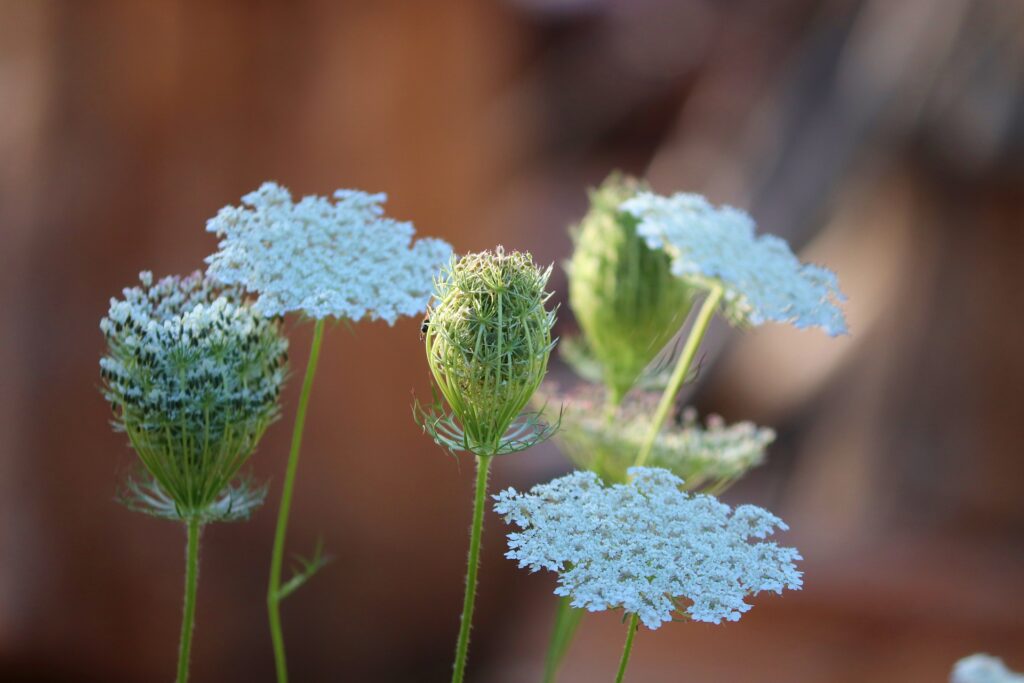
Queen Anne’s Lace, with its delicate, lacy blooms and airy, ethereal appearance, is a stunning and versatile addition to any cutting garden. These captivating flowers feature intricate, umbrella-shaped clusters that come in shades of white, pink, and lavender, adding a beautiful, natural touch to floral arrangements.
One of the key advantages of Queen Anne’s Lace is its long bloom time, which can span from early summer through the first frost. This ensures a steady supply of blooms for cutting, allowing you to enjoy their delicate beauty throughout the growing season. To incorporate Queen Anne’s Lace into your cutting garden, consider planting cultivars like ‘Dara’ or ‘Casablanca,’ which offer larger, more uniform flowers and sturdy stems.
Phlox
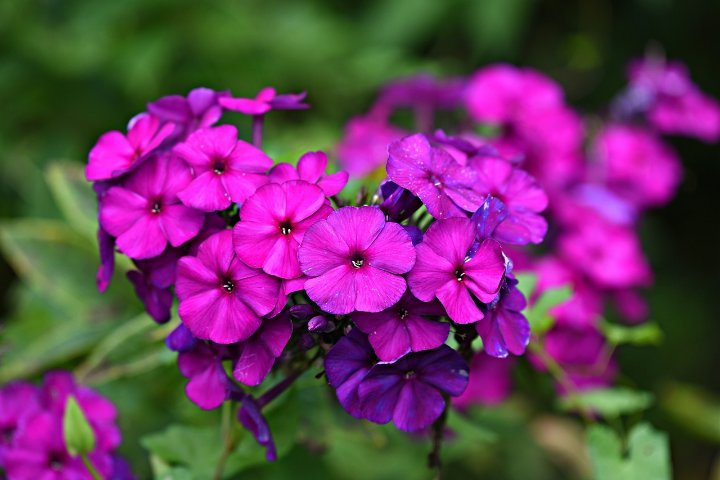
Phlox, with its vibrant, clustered blooms and sweet, floral fragrance, is a beloved addition to the cutting garden. These cheerful flowers come in a range of colors, from the classic pink and purple to more unexpected shades of red, white, and bicolor, making them a versatile choice for floral arrangements.
One of the standout features of phlox is its ability to thrive in a variety of soil conditions, making it a relatively low-maintenance option for the cutting garden. To ensure a continuous supply of phlox blooms for cutting, consider planting a mix of early, mid, and late-season cultivars, such as ‘Coral Flame,’ ‘Intensia Blueberry,’ and ‘Flame Red.’ With their sturdy stems and long vase life, phlox flowers will add vibrant color and captivating fragrance to your floral creations.
Verbena

Verbena, with its delicate, clustered blooms and trailing, cascading habit, is a charming and versatile addition to the cutting garden. These enchanting flowers come in a range of colors, from the classic purple and pink to more unique shades of red, white, and blue, adding a touch of whimsy and elegance to floral arrangements.
One of the key advantages of verbena is its long flowering season, which can span from early summer through the first frost. This ensures a steady supply of blooms for cutting, allowing you to enjoy their beauty throughout the growing season. When incorporating verbena into your cutting garden, consider cultivars like ‘Lanai Twister,’ ‘Tapien,’ or ‘Quartz,’ which offer large, long-lasting flowers and a trailing growth habit that can be used to stunning effect in bouquets and centerpieces.


